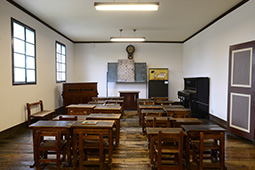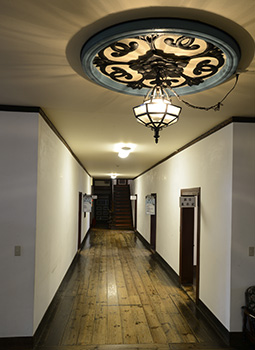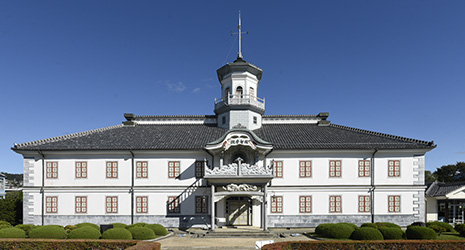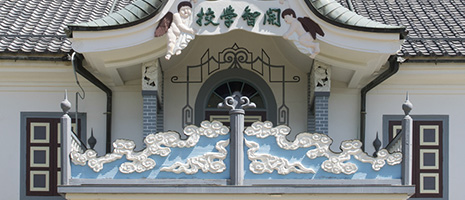INDEX



An authentically restored classroom, corridor and stairwell in the Former Kaichi School building
- PREVIOUS
- NEXT
June 2020
The Old School Building from the Dawn of Modern Times

The full-scale modernization of Japan dates back to the first year of the Meiji period, 1868, and architecture is no exception. Beginning around that time, Western-style buildings were constructed around the country. One such building still standing is the premises of the Former Kaichi School, although this beautiful structure is not quite as “Western” as it might at first appear.

Located in Matsumoto, Nagano Prefecture, the Former Kaichi School building was completed in 1876 by a master carpenter who followed the traditional architectural methods of Japan while introducing Western architectural features. That was in the early Meiji period, when after more than 250 years of feudalism Japan was embracing the concept of “civilization and enlightenment,” incorporating many aspects of Western civilization in its daily life, from new technologies to education for all. Many Western-style buildings were constructed at this time.
The Former Kaichi School building with its beautiful white walls and glass windows looks typically “Western” at first glance. However, the masonry-like features at the foot and corners of the walls are merely painted with stone-colored plaster, while some of the pillars also appear to be made of brick but are in fact painted wood. The structural pillars are made of wood and once supported a temple. The roofs of the porch and balcony are designed in the karahahu style of traditional Japanese architecture. The balcony itself is adorned with Buddhist temple-style carvings of clouds, while the eaves are decorated with carvings of dragons, another Eastern motif. And yet, carvings of two cherubs, the winged babies of biblical art, float above the clouds on the balcony, holding a banner announcing the name of the school. Atop it all sits a large octagonal tower.
Unique and mysterious, the mixed architectural style of the Former Kaichi School building is referred to as giyofu-kenchiku, meaning “pseudo-Western-style architecture.”



“Kaichi School opened in 1873 in an abandoned temple. Behind the construction of the new school was the need for a building that would symbolize a new era filled with hope,” says Endo Masanori, curator of the Former Kaichi School building.
Design and construction of the building were assigned to Tateishi Seiju, a local master carpenter. Tateishi visited Tokyo and Yokohama to see Western-style buildings for reference and employed his skills and inventiveness to create the school building in a unique, quasi-Western style.
Having flourished as a strategic point of commerce since ancient times, the people of Matsumoto had long been enthusiastic about education and small private schools were well established in the town during the Edo period (1603–1867). According to statistics compiled three years after the Meiji government launched the modern school system in 1872, the school enrollment rate in the area around present-day Matsumoto or the former Chikuma Prefecture reached 71.5%, twice as high as the national average of 35.6%. After the completion of Kaichi School in 1876, more than 1,000 pupils gathered there. Nearly 70% of the construction expenses for the Kaichi School building are said to have been paid for through local donations.
After a while, buildings in the giyofu architectural style fell out of favor and were often destroyed because they were not authentically Western and lacked functionality. The Kaichi School building however survived and served as an elementary school until 1963, when a new school building was completed nearby.
“The Former Kaichi School keeps documents written by teachers from different generations along with many other materials to emphasize the significance of learning at the historic school building. Graduates have also continued preservation activities by, for example, giving donations for the remodeling of the school building,” says Endo.
Over the years, some parts of the building had been damaged or repaired, so in 1964, after the new school was completed, the former school building was renovated to look just as it did when it was new. Inside, the lecture hall with its solemn atmosphere, stained-glass decorations and other details remain the same as they were during the school’s heyday.
For its high cultural value, the Former Kaichi School became the first modern school building to be designated as a National Treasure in 2019. Pupils from the new municipal Kaichi Elementary School take pride in cleaning the old school building, ensuring its legacy continues to be handed down.
- PREVIOUS
- NEXT

